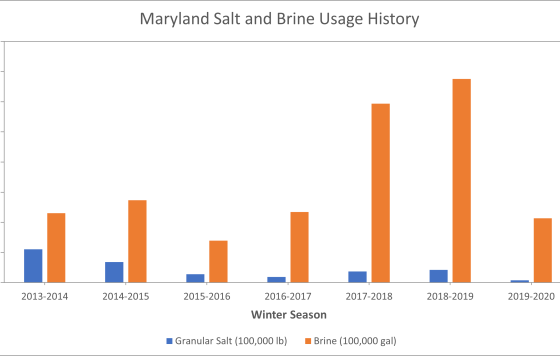In the opening, we briefly touched on impacts of salt on sodium consumption. However, salt pollution’s threat to public health does not end there. This section will explore in greater detail about the different ways in which salt pollution threatens our safety.
Sodium Consumption
Exactly how much sodium are we are drinking every day? In the absence of salt pollution, we typically do not need to worry about the amount of sodium in drinking water. Given mean well water concentrations of 30-50 mg/L, drinking 8 glasses of water (2 liters) per day would lead to a reasonable intake of only 60-100 mg of sodium [Kelly et al 7].
However, at the EPA limit of 250 mg/L, someone would consume 500 mg of sodium drinking the same amount of water each day. This is a significant amount especially for adults with high blood pressure who must limit their sodium intake to 1,500 mg each day. Considering that numerous wells in the state have already exceeded the EPA limit, and the fact that 32.2% of adult Marylanders have high blood pressure, some residents can unknowingly consuming one-third or more of their daily sodium maximum just by staying hydrated [Winter Salt].

Corrosion of Infrastructure
Excess salt in the environment does not only threaten safety when it is consumed. Chlorides, a component of salt (sodium chloride, NaCl), prevent formation of protective layers between different metals, increasing metal corrosion rates [Pieper et al., 14078]. This corrosion causes increased water contamination, thinning of plumbing materials, and loss of aesthetic value [Pieper et al., 14078]. Corrosion costs more than $22 billion each year to just the public water supply alone. In addition, chlorides can damage bridges, pavement, cars, and storm water facilities, leading to a host of different safety concerns [winter salt].
Other Health Consequences
Salt’s also induces the mobilization of the metals cadmium, chromium, copper, iron, lead, and zinc in both soil and infrastructure [UMD extension]. Examples of health consequences include:
-
Cadmium: kidney damage
-
Chromium: allergic dermatitis
-
Copper: liver and kidney damage
-
Lead: brain damage
Other public health and safety concerns of salt pollution:
-
Salt contaminated water cannot be used for dialysis treatment (Winter Salt)
-
Pets can become sick from eating road salt; walking over road salt can irritate paws (Winter Salt)
-
Increased E. coli survival rates in freshwater systems (DeVibiss)
-
Increased survival rate of disease-carrying mosquito larvae [Petranka and Doyle]
-
Mobilization of radionuclides (e.g., uranium, radium, radon) in rock and soil


